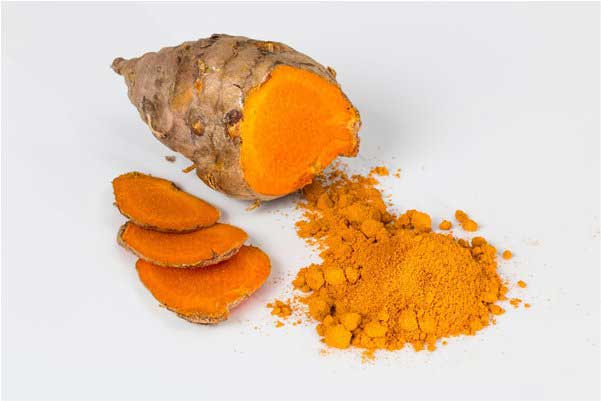

17/12/2022

Turmeric is an all-natural, tried and time-tested topical medication which our veterans in healthcare by natural means would swear by. Although, this wonder of an herb which has remained a favourite among many, has been potentially known for various culinary as well as curative reasons. This golden spice is also known as the ‘Indian Saffron’ the world over, and as Haldi or Haridra in various regions of India and can be noticed as a major ingredient resting on the kitchen shelves of almost every household. Interestingly, apart from lending a unique colour, taste and flavour to the dish, it also comes packed with a promise of good health.
Broader spectrum
The herb of Turmeric has largely served not only as an incredible nutrition supplement profile, but as a traditional means of medication as well, especially to those belonging to the Asian regions. The fame of this herb dates back to thousands of years, and it only continues to grow with time. Turmeric contains various biological compounds, out of which Curcumin is the most active and effective of all. Curcumin is precisely what delivers turmeric some strong anti-inflammatory, anti-microbial, anti-fungal, anti-bacterial as well as analgesic properties, along with a whole host of antioxidants.
Wound Healing Support
Turmeric helps speed up the wound healing process owing to the presence of some potent anti-bacterial and anti-microbial agents. These prevent the growth and spread of infection causing bacteria and harmful microbes in and around the wound, and keep them from entering our body. Turmeric also helps in quicker clotting of blood, thus preventing any excessive bleeding. The chance of having scars are also vastly reduced with regular application of turmeric paste, while the process of new skin formation takes place faster and better.
Why is it better?
Curcumin, unlike those commercial, over-the-counter medications, exhibits some natural anti-inflammatory properties and provides steady relief from swelling and inflammation, including those that result from a wound, a bruise, an abrasion or a cut. Curcumin primarily works by suppressing the activity of the molecules that cause inflammation to go over the board and further result in infections. It thus curbs and cures the wound deep down to the molecular level. At the same time, it also works as an effective analgesic and helps in getting rid of chronic pain and discomfort often associated with wounds.
Array of Antioxidants
Turmeric also comes loaded to the brim with a wide range of powerful antioxidants which prevent the growth and spread of free radicals in our body. The free radicals can damage our body by means of oxidation and, in case of wounds, significantly slow down the healing process. Fortunately, our body has the ability to naturally produce antioxidants in order to fight these free radicals and prevent, or at least, postpone the damage done by them. However, there often comes a time when have to source these from outside.
Immune Boost
Owing largely to its chemical structure and phenolic nature, curcumin goes a long way in digging out and neutralising the activity of those ‘free radicals’. This saves our body from experiencing damage at the cellular level, and to experience a faster healing from topical problems, including wounds. At the same time, by stimulating our body’s very own defence mechanism, it increases our body’s capacity to fight any chances of infection and to heal on its own.
Natural Healing with Turmeric
Turmeric exhibits strong medicinal capabilities but it is not a medicine per se. And as, prevention is better than cure, it is never too late to adopt a preventative approach and make turmeric a part of your life. You could simply enjoy the sheer range of benefits offered by this golden spice by adding it to your milk, tea and even while preparing your everyday food. Apart from availing benefits orally, we can also form a nice paste of turmeric and apply it topically onto the affected area. For this purpose, you need to take some turmeric, add some water to give it a thick paste-like consistency. Cover the area with a bandage or a clean cotton cloth for several hours. Take it off, wipe the area gently and allow it to air dry. Repeat this once a day for at least 3-4 days, and you will observe the healing happening, quicker than you expected. Using coconut oil in place of water makes for an even better choice.
Sanat Heal Plus
Heal plus ointment from the house of Sanat is believed to essentially “Heal Wounds Naturally”! It contains Haridra (Curcuma longa) along with Kayaputi tail (Tea tree oil), Devadaru tail (Cedar wood oil) and Gheekunwar (Aloe barbadensis), and is well indicated for healing of wounds, burns, scars, rashes etc. You need to simply apply a thin layer of Heal Plus ointment on the affected area for the same.
Author and Speaker
Copyright © 2021.Dr. Willmar Schwabe India Pvt. Ltd.. All Rights Reserved